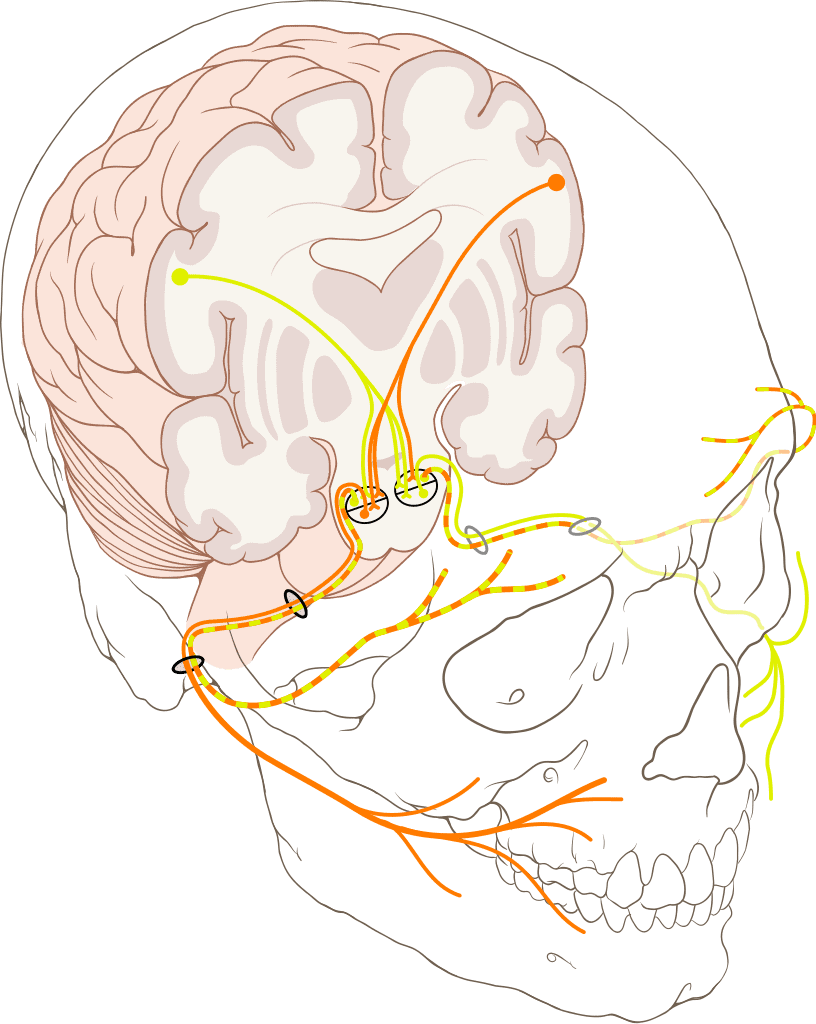Have you been diagnosed with hemifacial spasm? If so, you join just about 11 out of every 100,000 people diagnosed with this condition in the United States. If you’ve been seeking relief, you might have tried various medications or injections. But did you know there is a surgical treatment option? Learn more about hemifacial spasm surgery.
What is hemifacial spasm?
Hemifacial spasm is a rare disorder that causes facial muscle spasms. Women are diagnosed twice as much as men and the average age of patients is usually 40-50 years old. Most often, it’s due to compression of the seventh cranial nerve (CN-VII) in the brain by a displaced artery or vein. Other causes may include an injury, tumor or Bell’s Palsy.
Though it’s not life threatening, hemifacial spasm causes uncomfortable symptoms that often get worse over time. Besides physical symptoms, hemifacial spasm can also affect social and work life. The physical symptoms may include:
- Unilateral facial twitching
- Changes in hearing
- Clicking sound in the ear
How do you treat hemifacial spasm?
Because of its rarity, hemifacial spasm is often misdiagnosed. Other related conditions, such as blepharospasm, are typical diagnoses for patients. However, blepharospasm causes bilateral symptoms, meaning they occur on both sides of the face. In contrast, hemifacial spasm only affects one side of the face (unilateral). In some cases, it may also be diagnosed as anxiety or even a dental problem.
Misdiagnosed patients may receive prescription medication for treatment, usually anti-anxiety medication or anti-convulsants. One of the most common treatments for diagnosed hemifacial spasm is Botox. While Botox injections may temporarily reduce symptoms, it is not a permanent solution. The only known permanent solution is microvascular decompression (MVD) surgery.
What is microvascular decompression?
Microvascular decompression surgery is a minimally invasive procedure that relieves pressure on the facial nerve. Surgeons perform MVD surgery by making a small incision in the back of the head, behind the ear. Then, they locate the displaced artery putting pressure on the facial nerve. Once located, they insert a Teflon sponge between the artery and nerve. This relieves the pressure causing muscle spasms.

MVD is a proven surgery to treat hemifacial spasm. It is the only known permanent solution. This is because it directly relieves the pressure causing muscle spasms. Other treatment options like Botox and medications work to control symptoms. But MVD surgery works to correct the root cause of hemifacial spasm.
Should I have microvascular decompression?
Many patients find out about microvascular decompression surgery through online research. Because hemifacial spasm is so rare and often misdiagnosed, it’s not always clear that MVD surgery is a treatment option. This leads many people to begin searching online for symptom relief and treatment options. Then, they often discover information on microvascular decompression.
Deciding to have surgery is a personal decision. Like any procedure, there are risks involved with microvascular decompression. Some of these include:
- Infection
- Hearing loss
- Facial numbness or weakness that improves over time
- Difficulty speaking or swallowing
- Stroke or bleeding (very rare)
Yet, most side effects are rare. Most patients experience total permanent symptom relief. Muscle spasms may go away immediately after surgery or gradually over time. Over 90% of patients experience complete symptom relief.
Hemifacial Spasm Surgery
Hemifacial spasm is a movement disorder causing muscles spasms in the face. If you’ve been diagnosed with this rare condition, know there is a solution. Microvascular decompression surgery is available and is the only known permanent treatment option. A board-certified neurosurgeon can treat spasms at the source with this life-changing surgery for hemifacial spasm.
At Nashville Neurosurgery Associates, our team of expert neurosurgeons treats a full range of neurosurgical conditions. We are one of the region’s leading centers for neurosurgical care and treatment, with 14 convenient locations across Middle Tennessee. For more information, please visit nashvilleneurosurgery.com.

